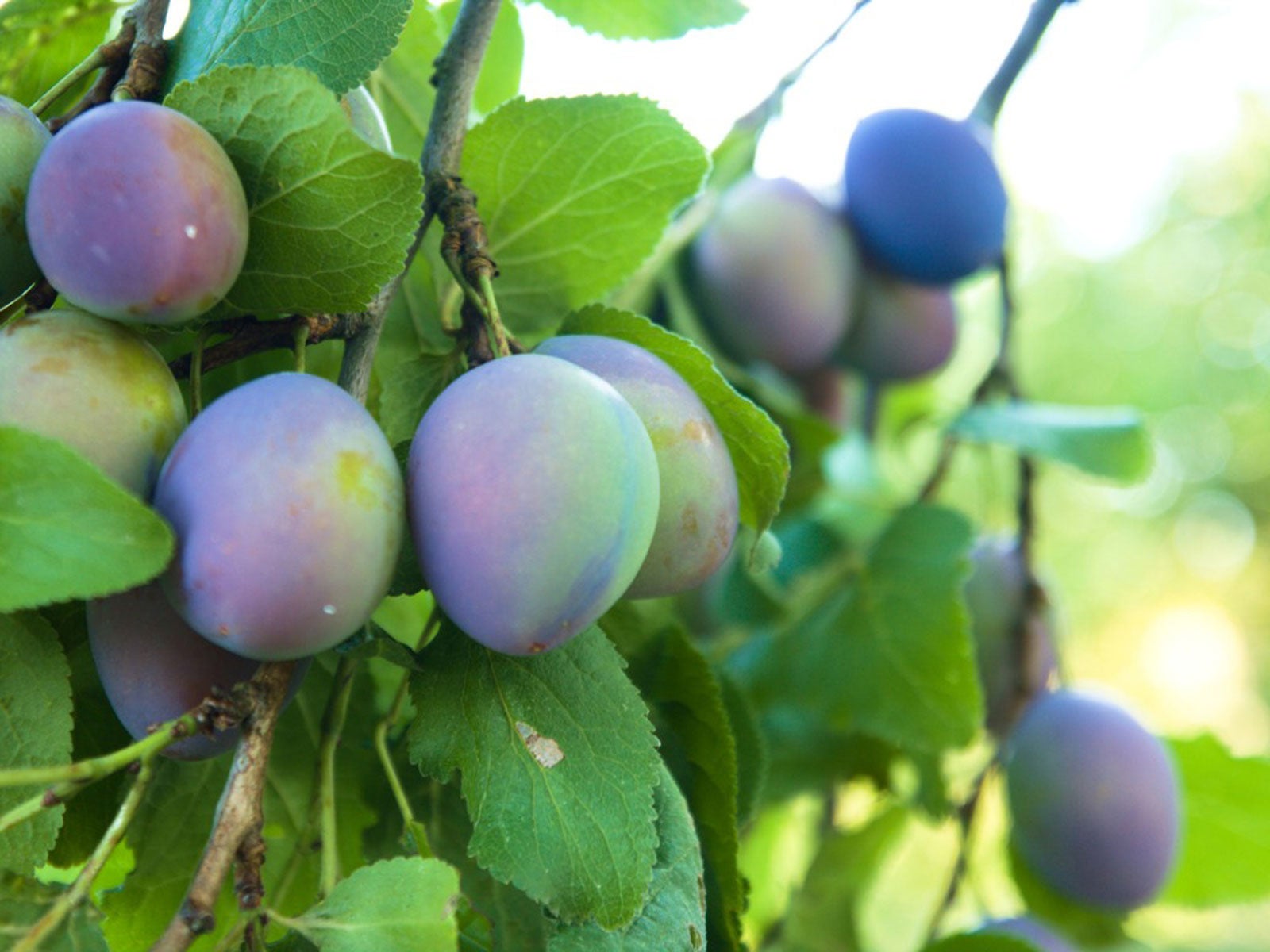
Thinking about growing prune trees, hmm? Italian prune plum trees (Prunus domestica) are an excellent choice of plum varietal to grow. Italian prunes can be kept as dwarf trees around 10-12 feet (3-3.5 m.) through careful pruning, a very manageable size. They are self-fertile, winter hardy, and the luscious fruit can be eaten fresh, dried, or canned. Prune trees produce five years after planting just as plum trees. However, their fruit has a much higher sugar content, making it preferable for drying with the pit inside without the risk of fermenting. Italian prune tree plantings are ready for harvest in early September. Early Italian prune plum trees mature around 15 days ahead of Italian prune trees, making it a good choice for regions prone to early frost that may damage ripening fruit.
How to Grow a Prune Tree
When growing prune trees, select a one or two year old from the nursery with at least four to five well-spaced branches and a healthy root system. The general rule for Italian prune tree planting is to set the tree early in the spring, although if fall conditions are mild and the soil moist, planting may occur in autumn. Choose a site for planting, avoiding any low-lying areas that may be susceptible to pooling water and freezing. Dig the hole a bit deeper and wider than the tree's root ball and place a handful of bone meal in the bottom. Remove the tree from the container and examine the roots for any damage which should be pruned away. Then situate the new tree in the hole so it is equidistant from all sides. Fill in around the plant with a mix of mulch or peat moss amended soil and water in well. Multiple Italian prune plum tree plantings should be spaced 12 feet (3.5 m.) apart.
Prune Tree Care
Once your transplant has been planted, prune tree care should include maintaining an area at least 4 feet (1 m.) out from the plant free of weeds. An organic mulch can be used to suppress weed growth. No fertilization is needed for the first two to three years. Feed the trees once they begin to fruit with 1 oz. (28 gr.) of a 12-14-12 fertilizer per 1 square yard (0.8 sq. m.) around the tree in the spring. You can top dress with organic mulch or animal manure in the fall or apply a foliar spray, but don't feed the trees too much. You may want to prune the tree at planting time. One year old trees can be cut back to 33-36 inches (84-91 cm.) and two year olds can have branches reduced to four well-spaced arms cut back by a third. To maintain this framework, prune shoots sent up from the ground in the spring and summer and keep the center of the tree open to provide air circulation and allow the sun in. Prune any non-fruiting, sagging, or deformed branches as needed. Heavy branches can be supported with a 2x4 or another wooden post. Italian prune plum trees are not as vulnerable to diseases and pests as other fruiting trees. Aphids, mites, and leaf rollers may require spraying. Spray with a horticultural oil with fixed copper or lime sulfur to dissuade insect infestation and fungal diseases.
Sign up for the Gardening Know How newsletter today and receive a free copy of our e-book "How to Grow Delicious Tomatoes".

Amy Grant has been gardening for 30 years and writing for 15. A professional chef and caterer, Amy's area of expertise is culinary gardening.
